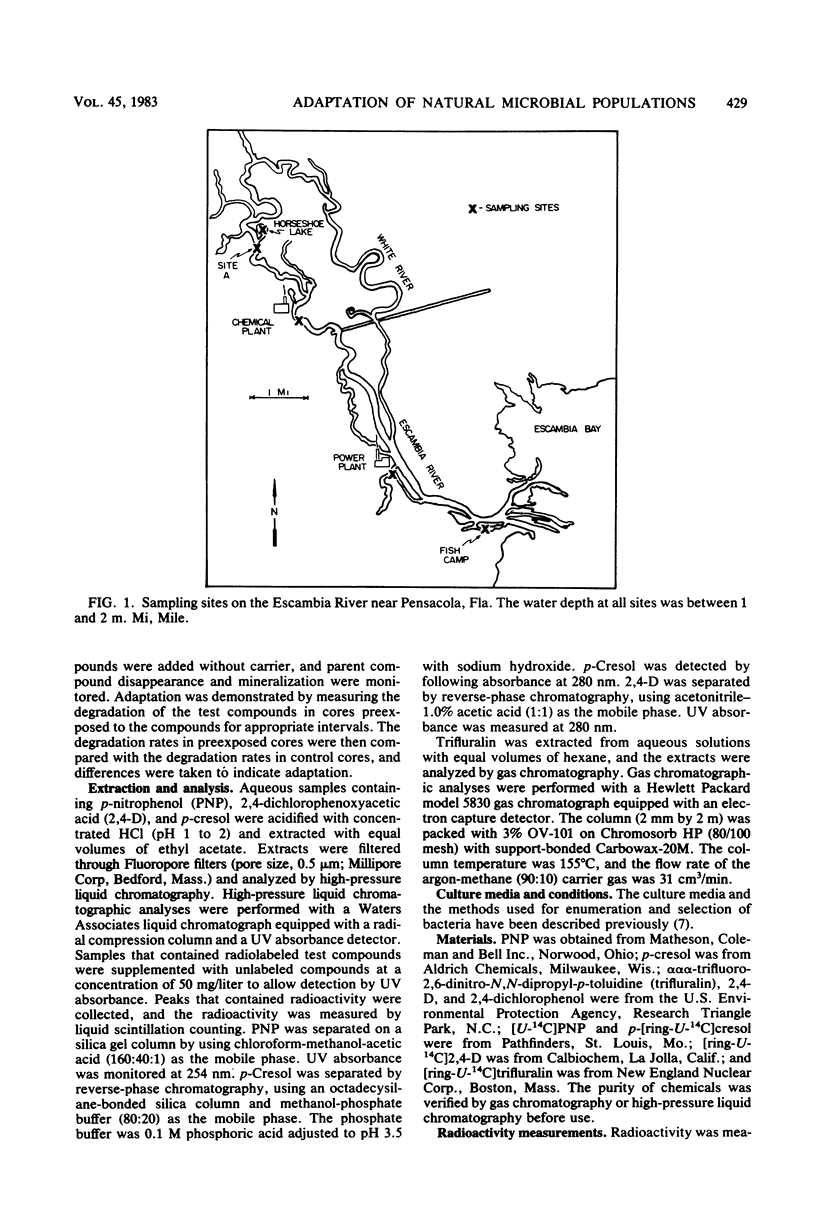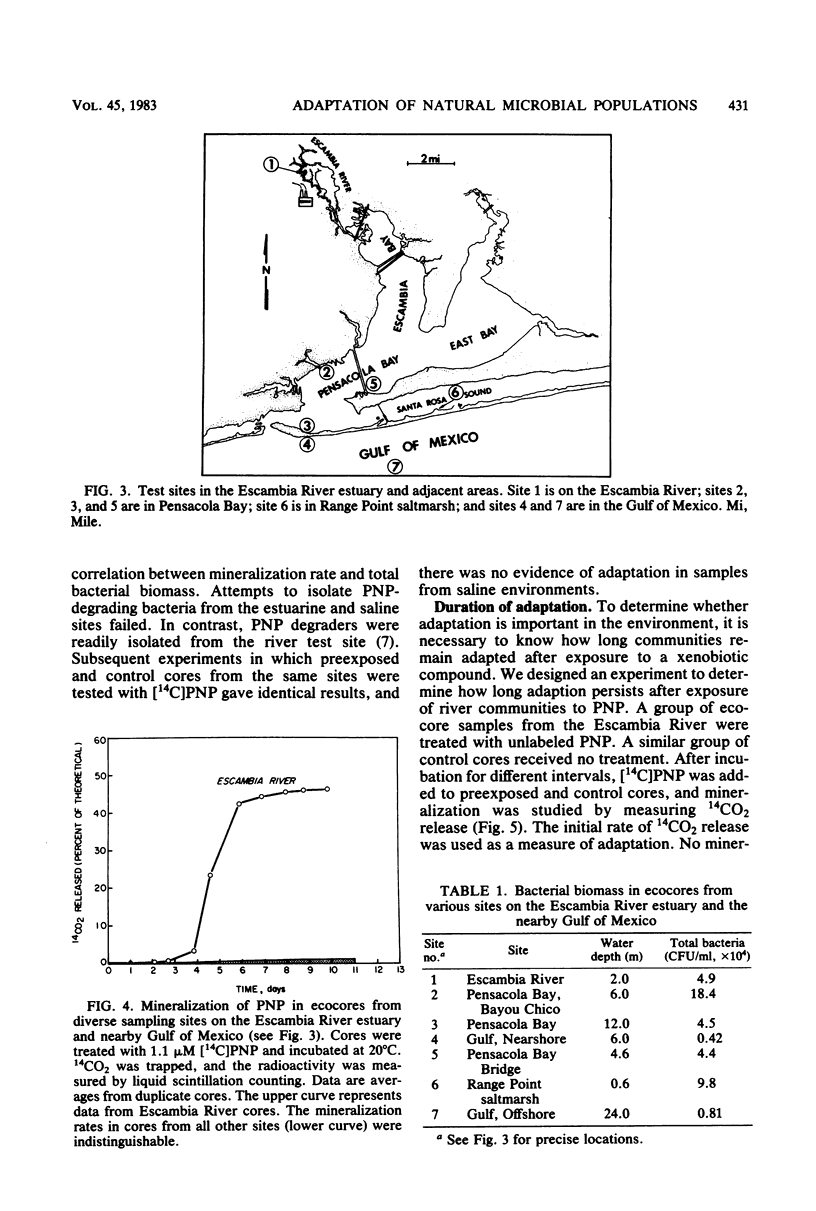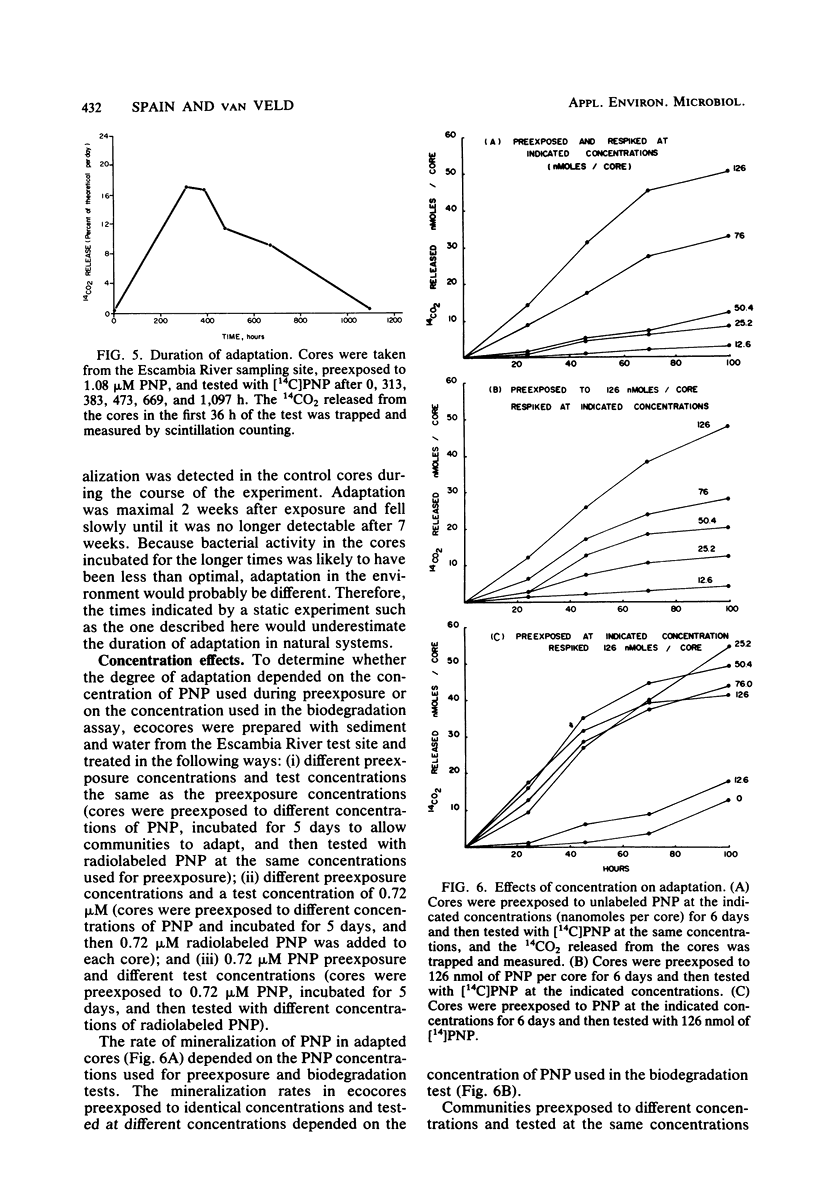Abstract
Adaptation of microbial communities to faster degradation of xenobiotic compounds after exposure to the compound was studied in ecocores. Radiolabeled test compounds were added to cores that contained natural water and sediment. Adaptation was detected by comparing mineralization rates or disappearance of a parent compound in preexposed and unexposed cores. Microbial communities in preexposed cores from a number of freshwater sampling sites adapted to degrade p-nitrophenol faster; communities from estuarine or marine sites did not show any increase in rates of degradation as a result of preexposure. Adaptation was maximal after 2 weeks and was not detectable after 6 weeks. A threshold concentration of 10 ppb (10 ng/ml) was observed; below this concentration no adaptation was detected. With concentrations of 20 to 100 ppb (20 to 100 ng/ml), the biodegradation rates in preexposed cores were much higher than the rates in control cores and were proportional to the concentration of the test compound. In addition, trifluralin, 2,4-dichlorophenoxyacetic acid, and p-cresol were tested to determine whether preexposure affected subsequent biodegradation. Microbial communities did not adapt to trifluralin. Adaptation to 2,4-dichlorophenoxyacetic acid was similar to adaptation to nitrophenol. p-Cresol was mineralized rapidly in both preexposed and unexposed communities.
Full text
PDF







Selected References
These references are in PubMed. This may not be the complete list of references from this article.
- DAGLEY S., PATEL M. D. Oxidation of p-cresol and related compounds by a Pseudomonas. Biochem J. 1957 Jun;66(2):227–233. doi: 10.1042/bj0660227. [DOI] [PMC free article] [PubMed] [Google Scholar]
- Felsot A., Maddox J. V., Bruce W. Enhanced microbial degradation of carbofuran in soils with histories of Furadan use. Bull Environ Contam Toxicol. 1981 Jun;26(6):781–788. doi: 10.1007/BF01622171. [DOI] [PubMed] [Google Scholar]
- Perry J. J. Microbial cooxidations involving hydrocarbons. Microbiol Rev. 1979 Mar;43(1):59–72. doi: 10.1128/mr.43.1.59-72.1979. [DOI] [PMC free article] [PubMed] [Google Scholar]
- Spain J. C., Pritchard P. H., Bourquin A. W. Effects of adaptation on biodegradation rates in sediment/water cores from estuarine and freshwater environments. Appl Environ Microbiol. 1980 Oct;40(4):726–734. doi: 10.1128/aem.40.4.726-734.1980. [DOI] [PMC free article] [PubMed] [Google Scholar]
- Spain J. C., Wyss O., Gibson D. T. Enzymatic oxidation of p-nitrophenol. Biochem Biophys Res Commun. 1979 May 28;88(2):634–641. doi: 10.1016/0006-291x(79)92095-3. [DOI] [PubMed] [Google Scholar]


